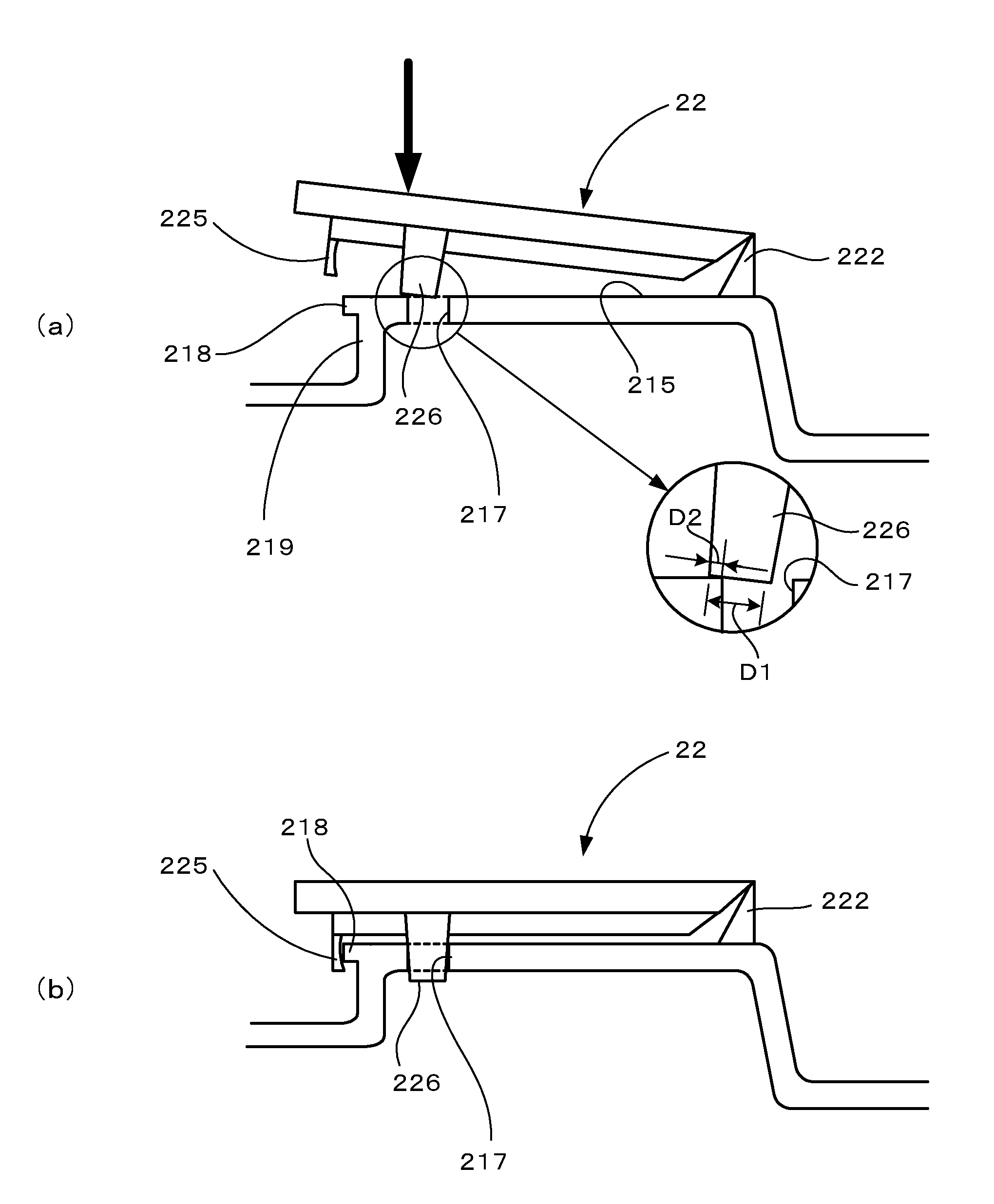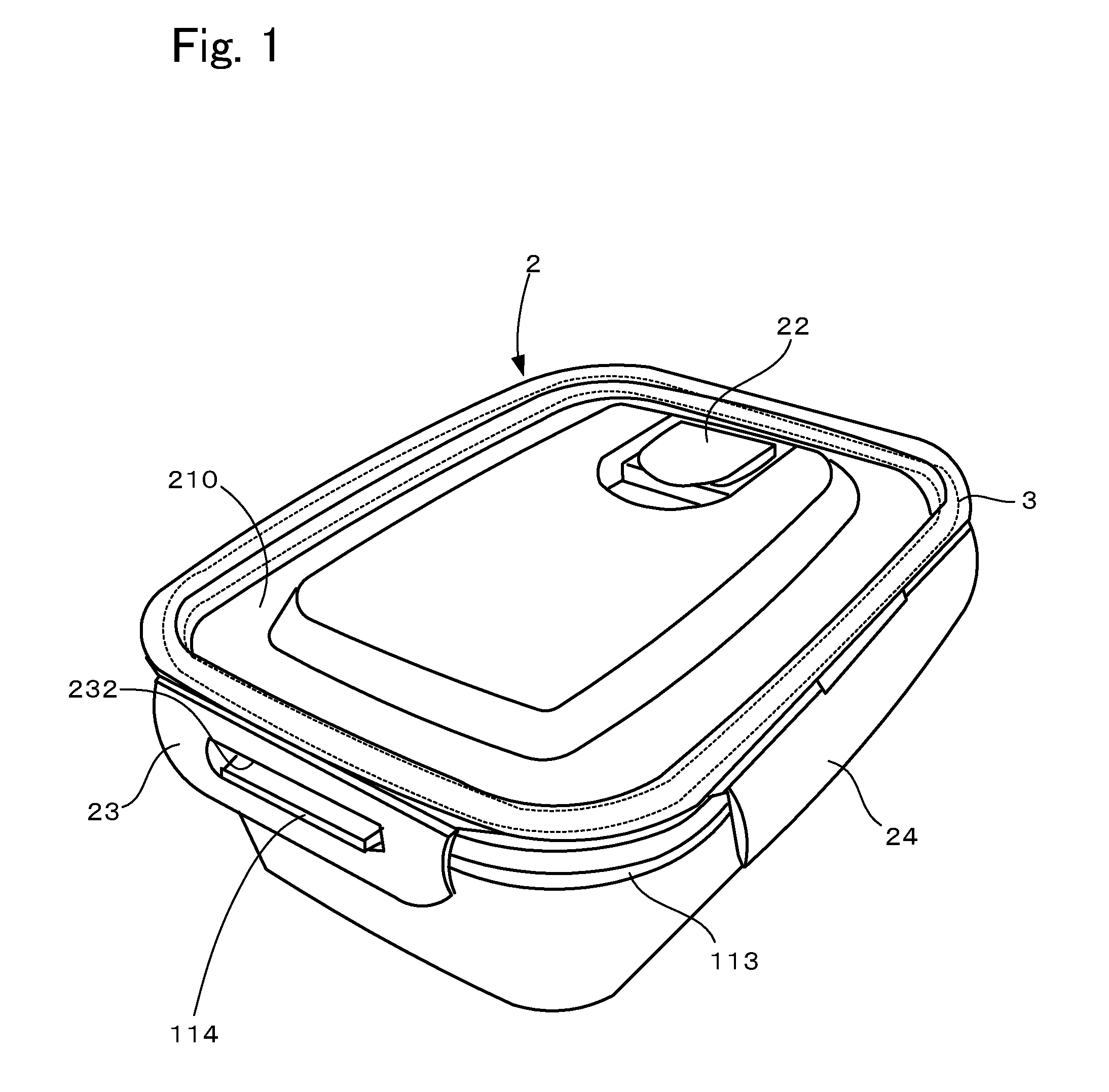Lid and container provided therewith
a technology for a container and a lid, which is applied in the field of lids and containers, can solve the problems of increasing the number of components, the container cannot be sealed, and the air hole is not easy to adhere the projection to the air hole precisely, so as to achieve the effect of enhancing the adhesion between the projection and the inner wall surface of the air hol
- Summary
- Abstract
- Description
- Claims
- Application Information
AI Technical Summary
Benefits of technology
Problems solved by technology
Method used
Image
Examples
Embodiment Construction
[0024]Below, an embodiment of the present invention applied to a lid and an airtight container for accommodating food will now be described with reference to the drawings. Note that in the description below, the right-left direction of FIG. 4 will be referred to as the width direction, and the top-bottom direction will be referred to as the longitudinal direction. Also, the upper side of FIG. 4 is referred to as a first end (one end) side, and the lower side is referred to as a second end (the other end) side. These apply to the other drawings as well.
[0025]FIG. 1 is a perspective view of a container according to one embodiment. As shown in FIG. 1, the container of this embodiment is configured with a container body 1 that has an opening in the upper part, a lid 2 that covers the opening in the upper part of the container body 1, and a sealing member 3 for fixing the container body 1 and the lid 2 so as to be liquid-tight. Below, these components will now be described in detail.
[002...
PUM
 Login to View More
Login to View More Abstract
Description
Claims
Application Information
 Login to View More
Login to View More - R&D
- Intellectual Property
- Life Sciences
- Materials
- Tech Scout
- Unparalleled Data Quality
- Higher Quality Content
- 60% Fewer Hallucinations
Browse by: Latest US Patents, China's latest patents, Technical Efficacy Thesaurus, Application Domain, Technology Topic, Popular Technical Reports.
© 2025 PatSnap. All rights reserved.Legal|Privacy policy|Modern Slavery Act Transparency Statement|Sitemap|About US| Contact US: help@patsnap.com



